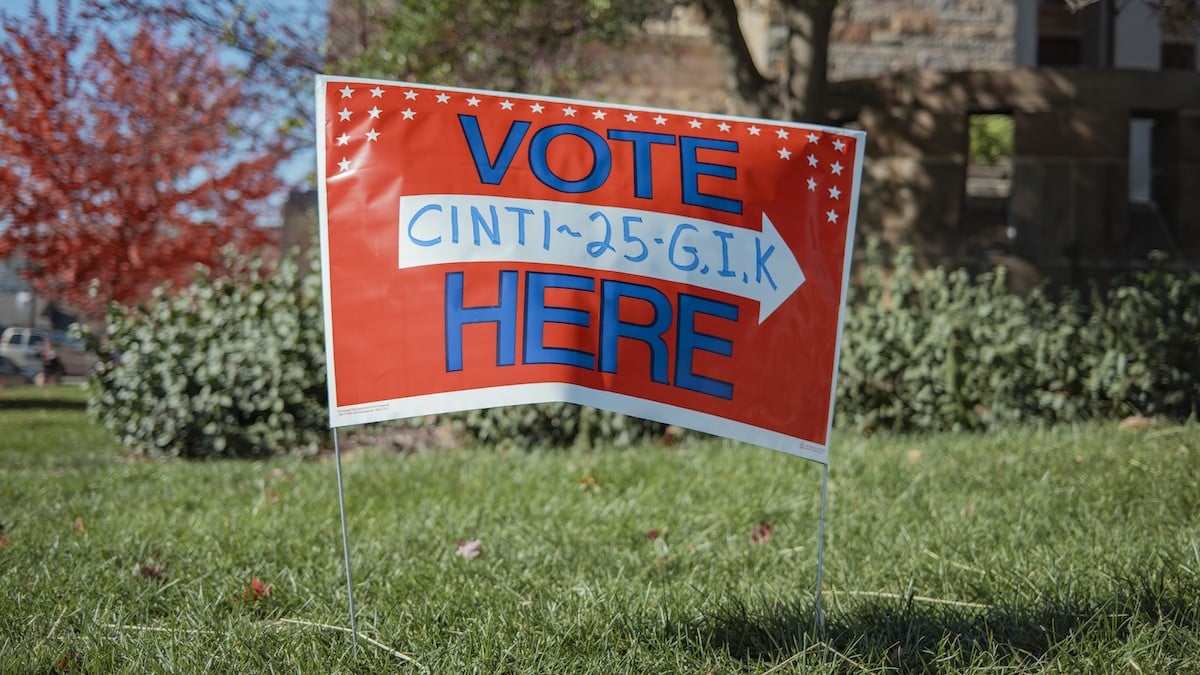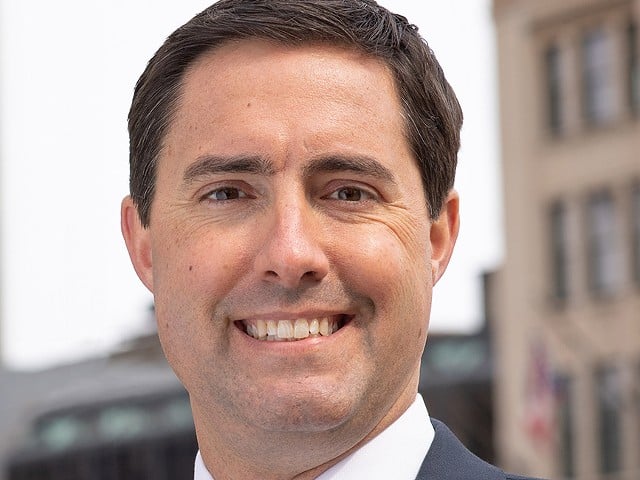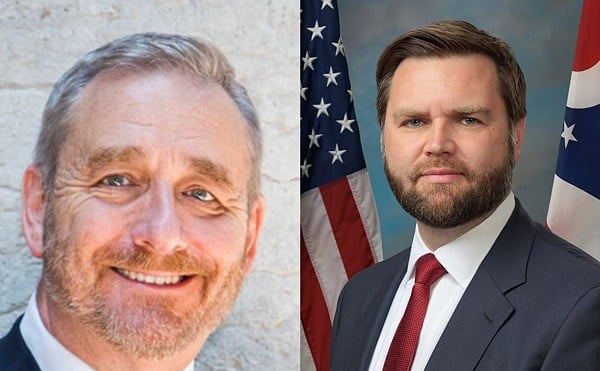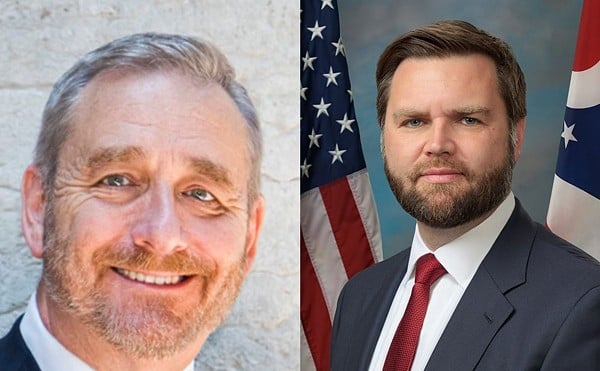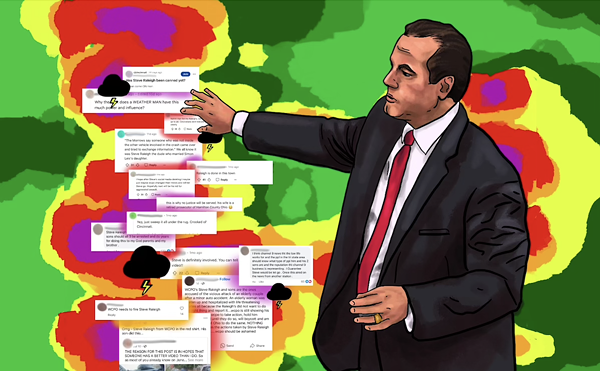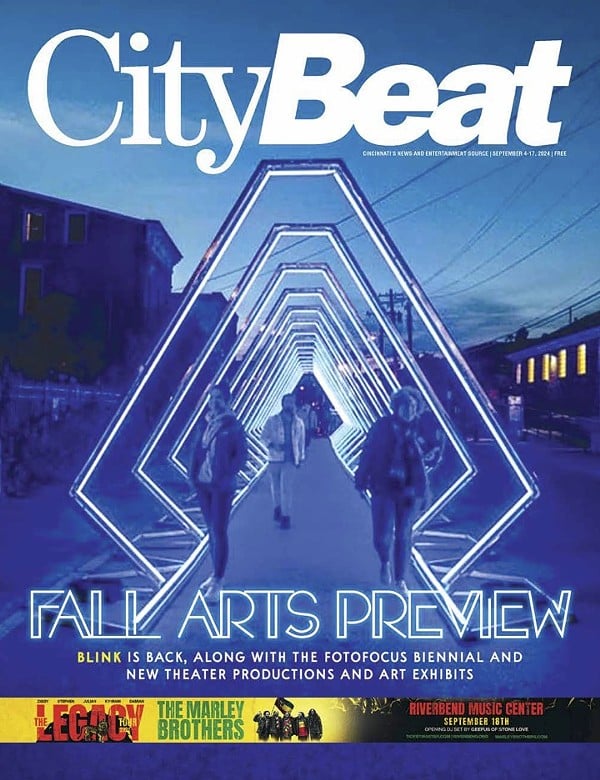Since initially flagging hundreds of alleged noncitizens on Ohio’s voter rolls, Sec. of State Frank LaRose has begun sending letters to those who are, in fact, citizens. The letter congratulates them “on being an active participant in our democracy!” and encourages them to make sure their records are up to date.
And to two recently naturalized citizens caught in the audit, that’s all fine. It’s where the letter goes next that frustrates them.
The letter states, “Ohio law requires the use of a current driver’s license or state issue photo ID for the purpose of voter identification.” And while those forms of ID certainly are valid, they aren’t the only options available to voters. Other options include an interim ID form issued by the Ohio BMV, a U.S. passport, a U.S. passport card, a U.S. military ID card, an Ohio National Guard ID card or
a U.S. Department of Veterans Affairs ID card.
After being dragged through a verification process they see as unnecessary and legally dubious, they say the letter’s oversight looks a lot bigger. And in light of Republican-led efforts in other states that swept up citizens in attempts to remove alleged noncitizens, they’re even more skeptical of officials’ motives.
Meanwhile, to LaRose, those cases don’t seem to merit a second thought. Rather than false positives encouraging a more cautious approach, LaRose has doubled down. After the U.S. Supreme Court recently allowed an Arizona law requiring proof of citizenship to register to vote, the secretary has urged Ohio lawmakers to pass similar restrictions here.
“We now have the opportunity to require front-end citizenship verification prior to a registration being processed,” LaRose said in a press release. “This would be a great step forward for future elections, and I’m asking the Ohio General Assembly to pass legislation further protecting the integrity of Ohio’s elections.”
When it’s been tried before, that “great step” wound up disenfranchising more than 30,000 eligible voters. A recent survey noted 1 in 10 Americans — more than 21 million — don’t have ready access to the documents necessary to prove their citizenship, such as a passport or birth certificate.
The Ohio Capital Journal requested an interview or statement from LaRose for this story as it did for two earlier ones regarding naturalized citizens flagged amid his noncitizen audits. The Ohio Capital Journal sought comment from LaRose for a series last year tracking his claims of alleged voter fraud more generally as well. His office has yet to respond.
How we got here
Nicholas Ross and Andrew Pearson both recently became naturalized citizens after living in the U.S. for more than 20 years. Ross is a pianist who chairs the Music Department at Otterbein University. Pearson teaches high school social studies in Cincinnati. They’re both British by birth and speak English as their first language. Each expressed concerns about how new citizens who aren’t native speakers would navigate the process.
As part of the naturalization ceremony, they both registered to vote. But a few months ago, they received letters challenging that registration. They’d both previously gotten a driver’s license, and since they hadn’t been into the state BMV since naturalization, according to those records, they weren’t citizens.
The problem is that the secretary of state relies on BMV records when checking citizenship.
“The way they are trying to double check if non-U.S. citizens are voting is based upon the idea that the driver’s license they see will exactly reflect your current citizenship,” Ross said. “And, yet, we know it doesn’t.”
What’s more, he added, there’s no current law requiring new citizens to update their information at the BMV.
All the same, Ross quickly returned his letter requesting proof of citizenship, but Pearson never did. Both received the follow-up letter congratulating them and warning them about the state’s photo ID requirements for voting.
So what’s the big deal?
Ross argued the letter’s framing of Ohio law as requiring “a state issue photo ID” is incomplete and misleading. He noted the letter itself includes a link that makes it clear Ohio voters have a handful of other options.
“So, in other words, that’s not true,” Ross said of the secretary’s letter.
One of the other acceptable forms of ID is a U.S. Passport, which Ross had always planned on using to vote anyway.
Pearson, meanwhile, saw the letter as confirmation the secretary’s initial challenge was “performative,” or “smoke and mirrors.” If he never gave the secretary his citizenship information, but the office confirmed his status anyway, why send the letter in the first place?
“They didn’t really need to go through that whole process of sending letters out to people, threatening (them) with felony charges,” he said, “All of those steps that they took were kind of redundant.”
As for the ID requirements, Pearson zeroed in on a different problem.
Starting last year, the BMV began printing “noncitizen” on driver’s licenses and ID cards for people who are in the country legally but are not yet citizens. While the secretary doesn’t explicitly state that a noncitizen ID is invalid for voting, he warns “you must avoid” using one and that “you could be required to vote provisionally.”
But what if you got your license before Ohio started including that notation and it’s still current? Pearson noted that’s the boat he and his father found themselves in, and his dad read the letter as requiring him to get to the BMV to update his license if he wanted to vote. Pearson argued that was an unnecessary inconvenience.
And even for those voters who do have the noncitizen marking on their license, he questions whether that by itself should be an obstacle.
Practically speaking, if a poll worker saw a noncitizen marking on a voter’s identification card, it could be grounds for challenging their right to vote. The problem is that nothing in state law, the administrative code or the secretary’s directive implementing Ohio’s photo voter ID law actually prohibits the use of noncitizen ID to vote. The only requirement is that a person’s ID be current.
It’s an important distinction because a driver’s license or ID is valid for four or eight years. That means anyone who got a license that includes the marking and has since naturalized is holding a card that will be valid through at least 2027. The BMV will give you a new version for free, but again, Pearson argued the voter shouldn’t have to fix a problem state lawmakers created. For comparison, he brought up the paper card the BMV sends out after you update your address.
“They could totally do that with citizenship,” he said. He added that if the Secretary can send him a letter confirming his citizenship, the BMV should be able to send along that free updated ID card.
And either way, Pearson said, if the secretary has just done all this work to clean up the voter rolls, then it shouldn’t matter if your license says noncitizen or not.
“If they are, in fact, doing their job, which they claim they are, because he says he’s very serious about removing noncitizens — as he should be — then that list that the polling locations have is valid,” he said. “So as long as the photo ID matches who you are and verifies your identity, shouldn’t we be trusting the voter rolls?”
Unnecessary burdens
Although state law doesn’t explicitly prohibit using a noncitizen license or ID for voting, one of the grounds for challenging a voter’s eligibility at the polls is suspicion that they are not a U.S. citizen. And once that challenge is made, things get murky. The voter has to fill out an affidavit asserting their eligibility and a majority of precinct officials have to agree to let them vote. Otherwise, they have to cast a provisional ballot.
Kayla Griffin from the voting advocacy group All Voting is Local warned, “I’m sure that we’re going to see spikes in our provisional ballot usage.”
She argued that unlike people born citizens, those who naturalize have to run an administrative gauntlet before becoming Americans. Tacking on additional barriers, whether through requiring letters to verify citizenship or additional trips to the BMV, is just a new kind of a poll tax.
“(They’re) saddled with the burden of making sure that they stay on the rolls, making sure that they bring extra information,” she said, “It’s more than what our law requires of them.”
LaRose’s vision for elections in the state would mean far greater complications for all voters — regardless of how they became citizens. The Arizona model recently endorsed by the U.S. Supreme Court sets up a two-track system, where state voter registration forms require proof of citizenship while the less commonly used federal form does not.
Voters who qualify to vote with the state form can vote the full ballot, while those who used the federal form are restricted to federal races only. But GOP lawmakers think even that arrangement is not stringent enough. A provision that the U.S. Supreme Court sidestepped would’ve blocked those federal-only voters from casting ballots in the presidential race or by mail.
Importantly, documents like a driver’s license or a Social Security card would likely be insufficient to prove citizenship. Under federal proof-of-citizenship legislation, which LaRose has endorsed, a passport is the most readily available single document for establishing citizenship. Otherwise, voters would need a photo ID and a document related to their birth, adoption or naturalization.
Despite LaRose’s urging, it’s almost certainly too late for lawmakers to make those changes before this year’s election.
A national pattern
The heightened scrutiny playing out in Ohio doesn’t stop at the state line. Jonathan Diaz, who works on voting rights for the Campaign Legal Center, explained noncitizen audits have happened in several other Republican-led states with similar results.
“The states that are doing this, I think, are just signaling in a political messaging way that they are taking the issue of noncitizen voting seriously and, perhaps more nefariously, trying to prime the public to think that there is a serious problem of noncitizen registration and voting in this country that is totally unsupported by any evidence.”
In Alabama, Tennessee, Texas, and Virginia this year, state officials have touted efforts to remove thousands of alleged noncitizens from the voting rolls. Diaz noted, by contrast, Ohio’s efforts are relatively tame. LaRose alleges he’s found hundreds while other states say they’ve found thousands.
Part of the reason could be an explicit statutory provision limiting his audit to people who indicated they are not citizens after having taken some voting action. Ross and Pearson both argue they never took that step and that LaRose is violating the law by casting too broad a net.
But Diaz cautions that, at this point, “It’s not super clear whether this is a couple of one-off mistakes or whether there is some systematic procedure that Ohio is undertaking that is not following that statutory process.”
Like Ohio, the other states aggressively pursuing alleged noncitizens have wound up catching eligible voters. Diaz added that the CLC has sent letters to leaders in Texas and Alabama warning that if they go forward with removing voters, they risk breaking federal law. Similar warnings in Tennessee led leaders there to send follow-up letters to voters assuring them they wouldn’t be removed over failing to respond.
But Diaz argues the rolls themselves aren’t the point.
“I don’t think that the goal of these announcements is actually to remove people from the rolls,” he argued. “I think it is to seed this narrative in the public consciousness about noncitizen voting, regardless of evidence, so that they can point to it in November and December as the reason why the election was quote-unquote stolen.”
This story was originally published by the Ohio Capital Journal and republished here with permission.
